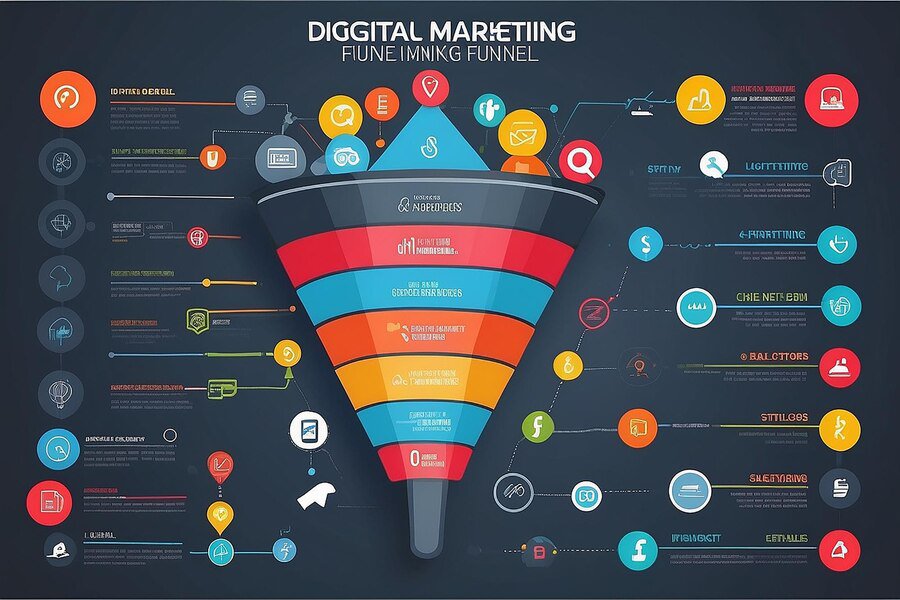From Concept to Launch: Website Development Guide
Embarking on the journey of website development is akin to navigating through a labyrinth of creativity, technology, and strategic planning. "From Concept to Launch: A Step-by-Step Guide to Website Development" serves as a beacon illuminating this intricate path, offering invaluable insights and practical methodologies to traverse each stage with finesse. Beginning with the inception of an idea, this guide meticulously outlines the essential steps, from conceptualization to execution, to transform mere visions into dynamic digital realities. Delving into the nuances of design, coding, and user experience, it equips aspiring developers and seasoned professionals alike with the tools necessary to craft captivating online experiences. With a holistic approach, it not only emphasizes the technical aspects but also underscores the significance of user engagement and market research. Whether embarking on a personal project or steering a corporate venture, this guide stands as a definitive roadmap, empowering individuals and teams to embark on their website development odyssey with confidence and clarity.
Understanding the Vision: Defining Your Website's Purpose and Goals
Before diving into the technical aspects of website development, it's crucial to have a clear understanding of the website's purpose and goals. This involves conducting thorough research to identify the target audience, understand their needs, and determine what you aim to achieve with the website. Whether it's to provide information, sell products, offer services, or build a community, defining the vision sets the direction for the entire development process. By establishing clear goals, you can ensure that every aspect of the website—from design to functionality—works towards fulfilling its intended purpose, ultimately maximizing its effectiveness and impact.

Crafting the Blueprint: Planning Your Website's Structure and Layout
Once you have a clear vision in mind, the next step is to create a blueprint that outlines the structure and layout of your website. This involves mapping out the navigation, organizing content, and designing the user flow to ensure a seamless and intuitive experience for visitors. By planning the layout in advance, you can identify potential bottlenecks or inconsistencies and address them before moving on to the development phase. Additionally, creating a blueprint helps streamline the design process by providing a clear roadmap for designers and developers to follow, ensuring that everyone is aligned with the project's goals and objectives.
Designing the Interface: Creating a User-Centric Experience
The interface design plays a crucial role in shaping the user experience and determining how visitors interact with your website. This involves creating visually appealing layouts, choosing the right color scheme and typography, and incorporating intuitive navigation elements to guide users through the site. A user-centric approach focuses on understanding the needs and preferences of your target audience and designing the interface to meet those needs effectively. By prioritizing usability and accessibility, you can create a positive and engaging experience that encourages visitors to explore your content, take action, and return in the future. Effective interface design not only enhances the overall aesthetic appeal of your website but also contributes to its functionality and usability, ultimately driving user satisfaction and retention.
Building the Foundation: Front-End Development Essentials
Front-end development involves turning design mockups into fully functional web pages using HTML, CSS, and JavaScript. This stage of the development process focuses on building the visual and interactive elements of the website that users interact with directly. Front-end developers work closely with designers to ensure that the website's layout and interface are faithfully translated from concept to code, while also optimizing for performance and responsiveness across different devices and screen sizes. By mastering front-end development essentials such as
responsive design, cross-browser compatibility, and accessibility standards, you can create a seamless and engaging user experience that delights visitors and encourages them to stay longer and explore further.
Coding the Backbone: Back-End Development and Database Integration
While front-end development focuses on the client-side aspects of the
website, back-end development deals with the server-side logic and database integration that powers its functionality. This involves writing code in languages such as PHP, Python, or Node.js to handle user requests, process data, and generate dynamic content in response. Back-end developers also work on integrating the website with databases to store and retrieve information efficiently, ensuring that data remains consistent and secure. By coding the backbone of the website, back-end developers enable features such as user authentication, content
management, and e-commerce functionality, providing a robust foundation for the entire site. Effective back-end development is essential for creating a scalable, reliable, and secure website that meets the needs of both users and administrators alike.

Testing and Tweaking: Quality Assurance and User Feedback
Quality assurance (QA) and user feedback are critical stages in the website development process, ensuring that your site functions flawlessly and meets user expectations. Through rigorous testing and soliciting feedback from users, you can identify and rectify any issues or areas for improvement before launching your site to the public.
- Conduct thorough testing across various devices and browsers to identify and fix bugs and inconsistencies.
- Utilize automated testing tools to streamline the QA process and ensure consistent performance.
- Gather feedback from real users through surveys, usability testing, and analytics to understand their experiences and preferences.
- Iterate on your design and functionality based on user feedback to optimize the user experience and drive engagement.
- Continuously monitor and maintain your website post-launch to address any new issues and keep it running smoothly.
By prioritizing quality assurance and user feedback throughout the development process, you can ensure that your website delivers a seamless and satisfying experience for visitors. Regular testing and iteration enable you to iron out any kinks and make data-driven improvements that enhance user satisfaction and drive business goals.
Launching with Impact: Deployment, Marketing, and Beyond
Launching your website is just the beginning of your online journey. To make a lasting impact, you need a strategic deployment plan, effective marketing strategies, and ongoing efforts to maintain and grow your online presence. By taking a holistic approach to launching your website, you can maximize its visibility, reach, and effectiveness in achieving your goals.
- Develop a deployment plan to ensure a smooth and successful launch, including setting up hosting, configuring DNS settings, and deploying updates.
- Implement marketing strategies such as search engine optimization (SEO), social media marketing, email campaigns, and online advertising to drive traffic to your site.
- Monitor key metrics and analytics to track the performance of your website and marketing efforts, and make data-driven adjustments to optimize results.
- Provide ongoing support and maintenance to keep your website secure, up-to-date, and functioning smoothly.
- Continuously iterate and innovate to stay ahead of the competition and meet the evolving needs of your audience.
Launching your website is just the first step in your digital journey. By deploying strategic marketing initiatives and maintaining ongoing efforts to improve and innovate, you can maximize the impact of your website and achieve long-term success online.
Conclusion
Navigating the journey from conceptualizing a website to its successful launch requires careful planning, strategic execution, and a keen understanding of your target audience's needs. Throughout this guide, we've explored the vital steps involved in website development, from defining objectives and designing user-centric interfaces to coding functionalities and testing for optimal performance. Each stage demands attention to detail and a creative approach to problem-solving, ensuring that your website not only meets but exceeds expectations.
For further assistance in transforming your website aspirations into reality, don't hesitate to reach out to Ideation Digital Marketing. Located in Charleston, WV, our expert team is equipped with the skills and expertise to guide you through every phase of the development process. Contact us at (304) 814-2445 to discuss your project requirements and embark on the journey towards a successful online presence.












